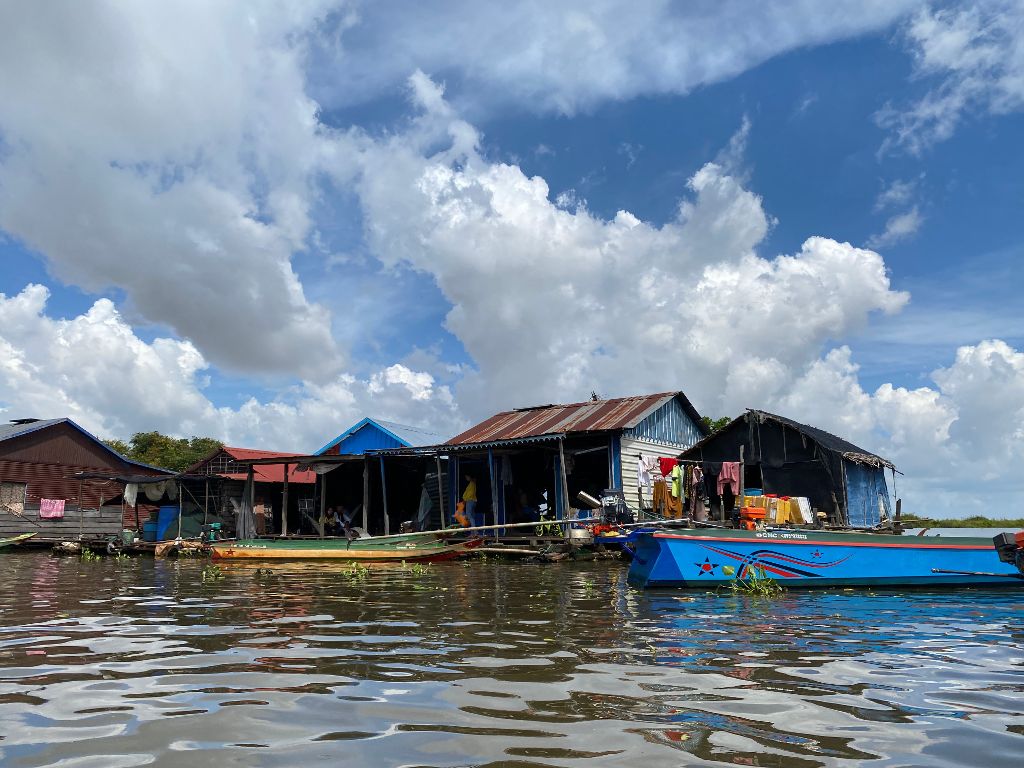An excursion to the Floating Villages and Biosphere Reserve after the rainy season
The unique nature and floating villages make a trip to the Tonle Sap an unforgettable experience. Ideal if you are coming to Siem Reap for a few days and want to see something other than Angkor Wat.
Some context
The Tonle Sap is the largest lake in Southeast Asia and a dynamic ecosystem that changes dramatically within a year. During the rainy season, it is fed by the Mekong and rainwater, which increases its surface area. In the dry season, it empties again. The surface area of the lake doubles and halves within a year. This is important to bear in mind when planning a trip to the Tonle Sap and using the map as a guide.
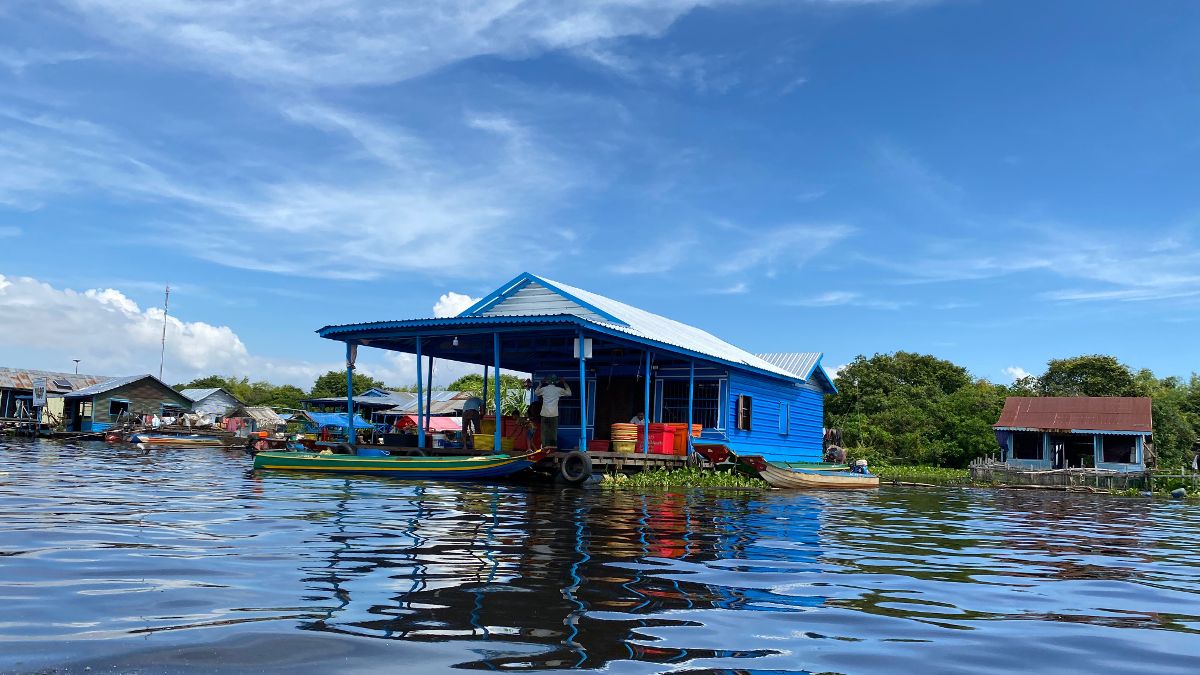
The pictures and experiences on which this report is based were taken in November, shortly after the end of the rainy season.
Travel planning
Siem Reap is the ideal starting point for an excursion. It is best to set off early in the morning to make the most of the soft morning light for beautiful photos and to avoid the afternoon heat and rain in the early evening. The journey by car from Siem Reap to the banks of the Tonle Sap takes between 30 and 90 minutes, depending on the route.
From the villages of Kaev Poar and Kampong Phluk on the banks of the Tonle Sap, you can book a boat or a place on the ferry to take you further into the lake.
You should plan at least half a day or a whole day for a trip to Tonle Sap. It's worth taking a camera, sun hat and something to drink with you. You can leave your swimsuit at home, swimming in the lake is not recommended.
The area around the Tonle Sap is not very well developed for tourism and most of the routes are covered by boat. It is therefore advisable to plan an excursion in advance, book a tour or hire a guide to organize it for you.

Once you have reached the edge of the lake, you can continue by boat. Either directly to the floating villages or deeper into the lake to take in the idyllic nature, for example in the Prek Toal bird reserve.
UNESCO Biosphere Reserve
The Tonle Sap is a protected area that has been recognized by UNESCO as a biosphere reserve. It is home to many plant and animal species that are adapted to the alternating dry and rainy seasons.
The Tonle Sap has a lot to offer bird lovers. Rare endemic species as well as migratory birds can be observed. The latter use the lake as a breeding ground to raise their offspring.
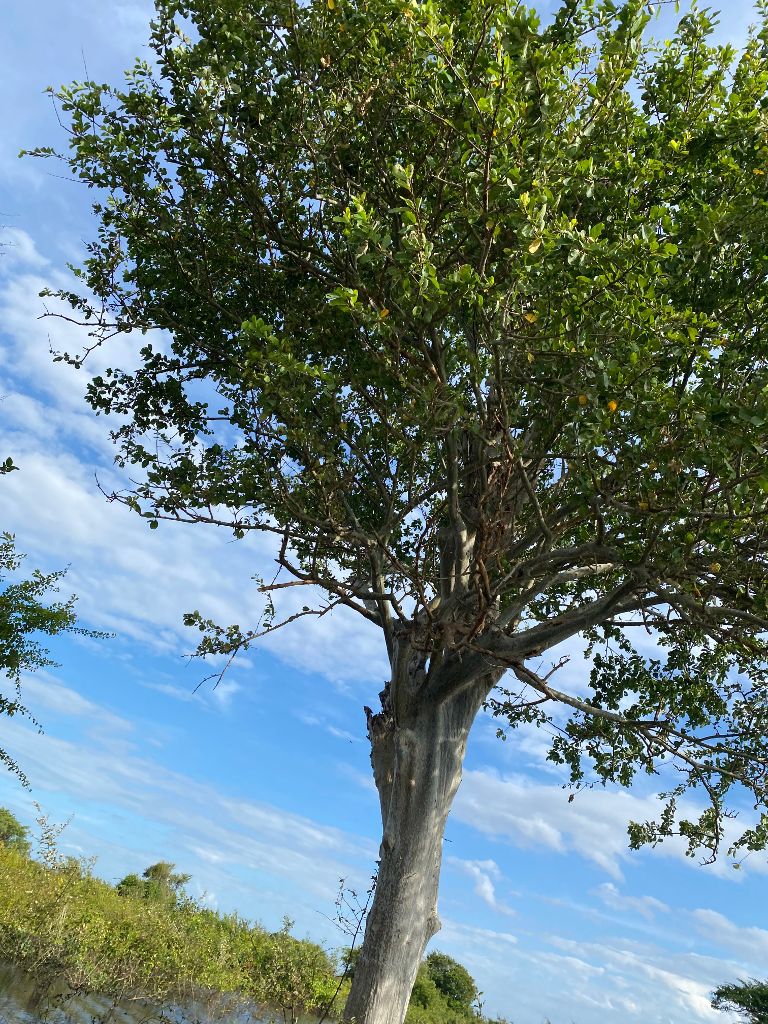
Birds can be observed from observation stations. These are covered wooden frames on high trees, which are set up close to breeding sites. However, little can be seen with the naked eye. If you have binoculars, binoculars or cameras with a good lens, you can enjoy an interesting spectacle.
The following experience has stayed with me. At an observation station. A small colony of birds is nesting in the tree, the parents with their young in the nests. Two birds of prey at the top of the treetop. The birds of prey wait, sometimes for hours, until the parents become careless and then grab the offspring. The scene seems peaceful and idyllic. When I asked how the parents could be so calm, even though two birds of prey were waiting a few meters further up to eat their offspring, our guide Sophea said laconically: "Defense through calm".
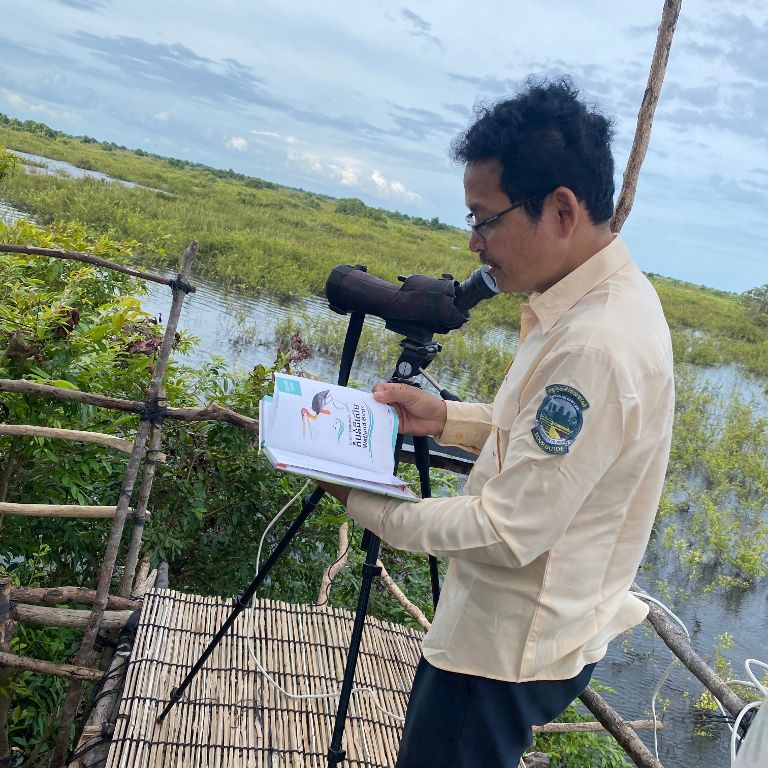
Some of the native bird species have become rare. Partly because they have been hunted. This is not so much because their meat is considered particularly tasty or nutritious. In Cambodia, magical world views and superstitions are widespread, and eating such birds must be seen in this context, as it is believed that by eating such birds, power, potency or other qualities of the animal are transferred to humans.
Rangers ensure that rules are observed in protected areas and that animals are not hunted. The first rangers, who were recruited years ago, were originally hunters who hunted the birds.
Floating Villages, an insight into Kaoh Chiveang
The floating villages are a collection of houses on rafts. A houseboat consists of oil or plastic barrels tied together at the bottom and a bamboo or wooden frame above, on which the single house sits. The individual houseboats are in turn partially connected and anchored together, creating a reasonably stable structure of houses or a village. The structure of the villages must be constantly adapted to the water level of the lake.
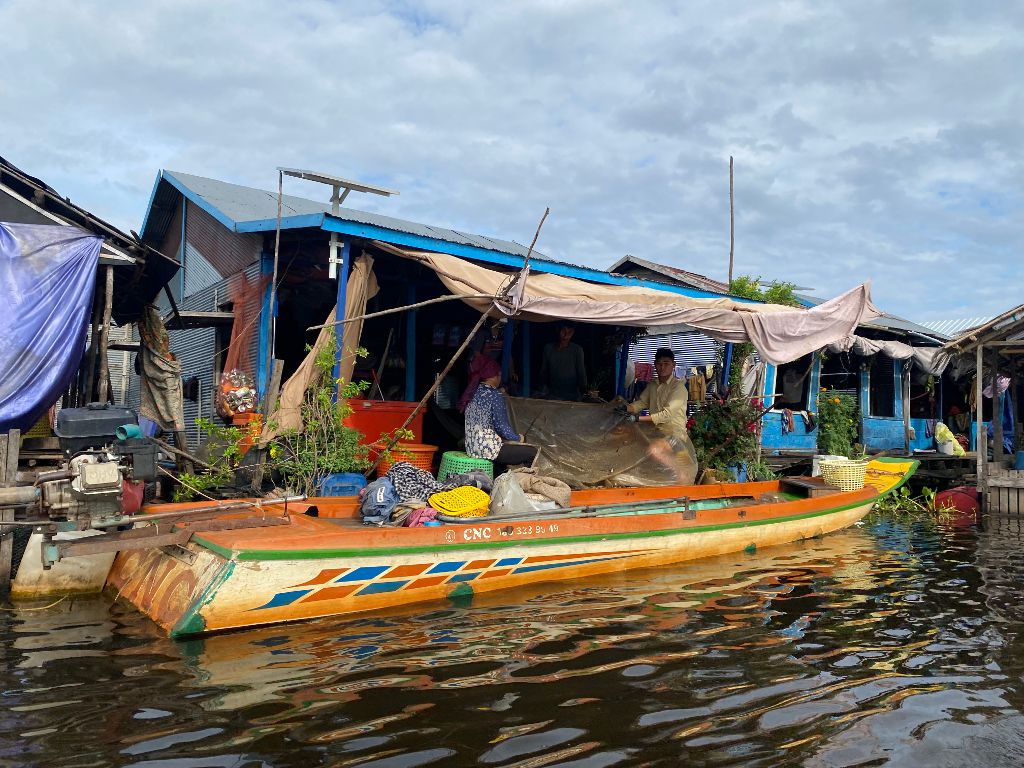
The floating villages gradually emerged around 100 - 150 years ago as more and more people settled on the lake to make a living from fishing. An estimated total of 80,000 people now live in around 170 villages on the Tonle Sap. Their livelihood is mainly based on fishing. Income from tourism still plays a subordinate role.
Kaoh Chiveang is one of the largest villages on the lake. It is located close to Kaev Poar. If you are visiting the Tonle Sap from Siem Reap, Kaoh Chiveang is a good stopover. There is something to eat here, a viewpoint from where you can overlook the area, small stores, school, pagoda, church. You don't have to be a good photographer or have a good camera to take nice pictures here.
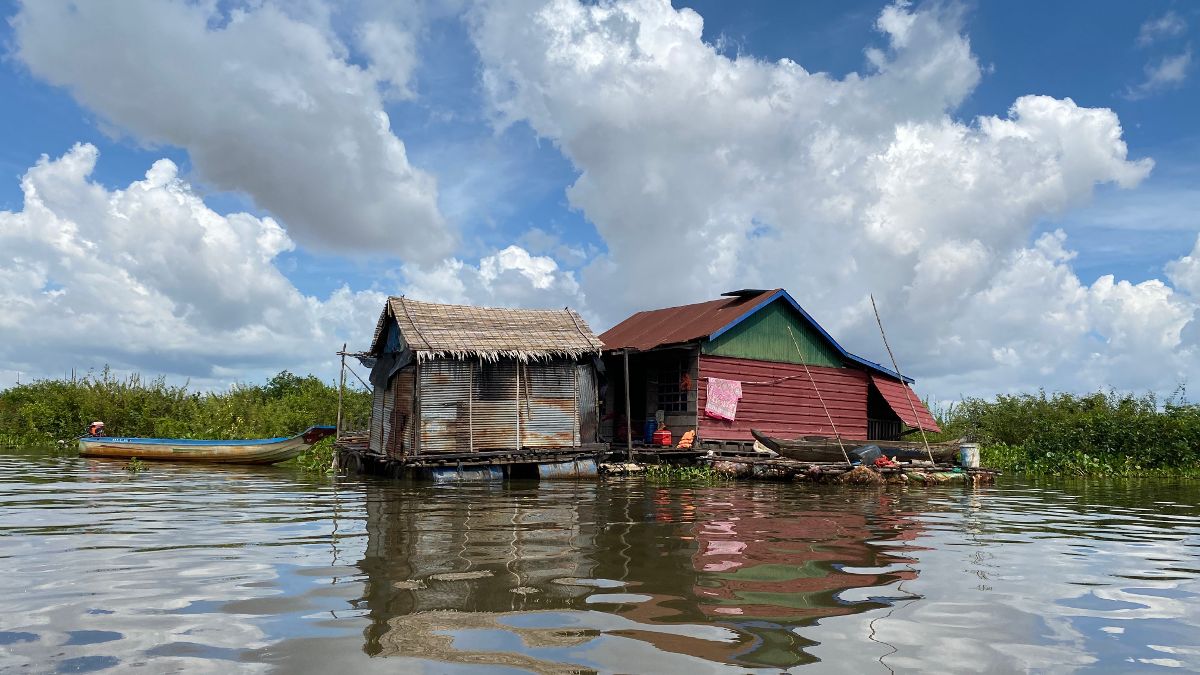
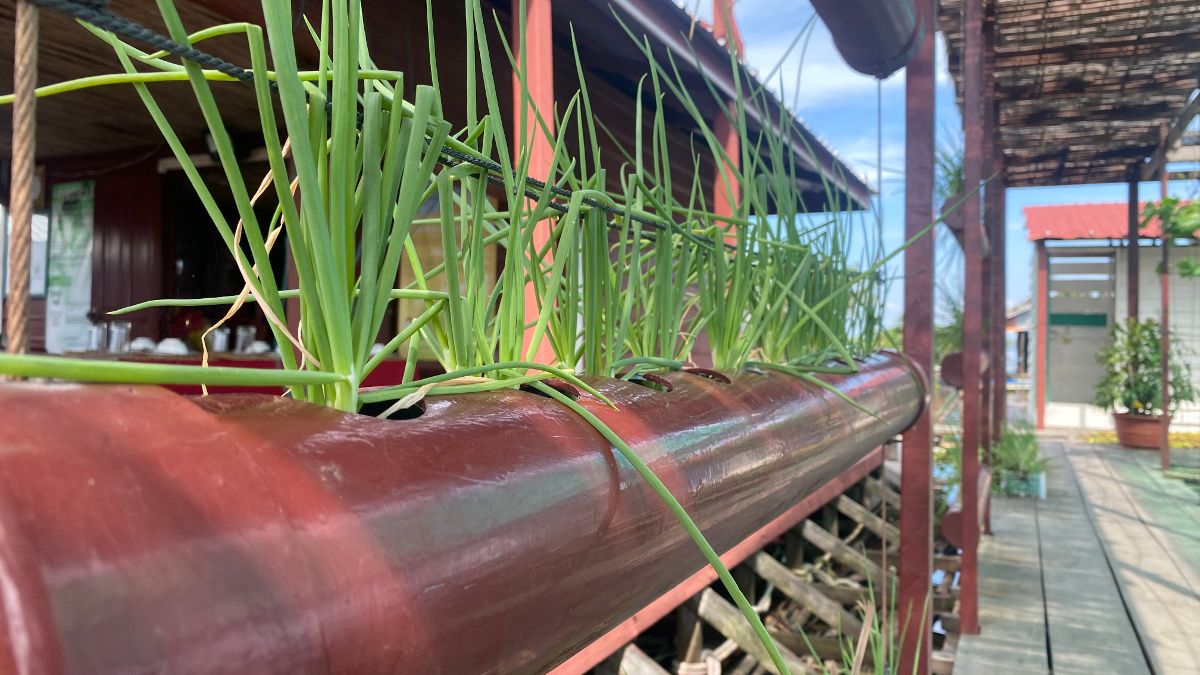
Osmose, an NGO runs a small restaurant and other projects in Kaoh Chiveang. For example, a floating garden or the weaving of baskets, bags and similar products. An impressive example of how the sustainable use of natural resources goes hand in hand with innovation.
What wheelchair users and people on a budget should consider
The conditions are not ideal for people in wheelchairs or on crutches. However, many things are feasible in Cambodia if you are patient, ask nicely and are not unnecessarily stingy.
Cambodia is a very cheap country, but a trip to the Tonle Sap is relatively expensive (for foreigners) and is in the middle to upper range, at least in the Cambodian context. The reason for this is the cost of the boat trips.
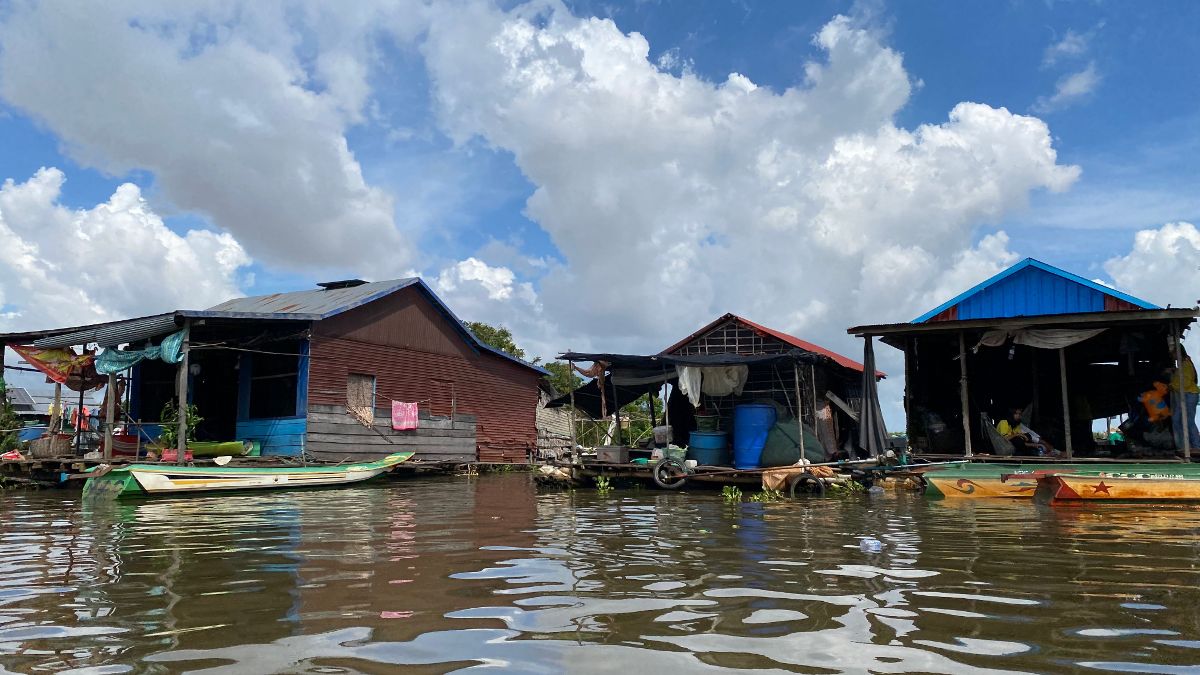
If you want to keep the costs at a bearable level, join forces with 4 to 5 people. That way, more people can share the cost of the boat and guide. Or skip the boat trips and visit Chong Kneas, a floating village on the banks of the Tonle Sap, about 15 km from Siem Reap.
